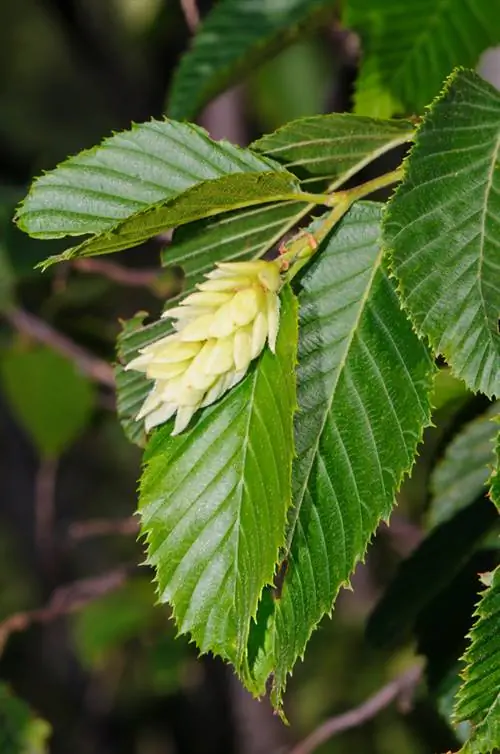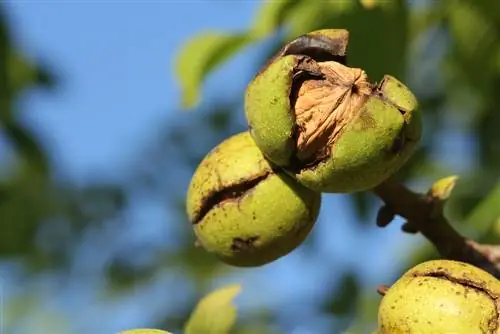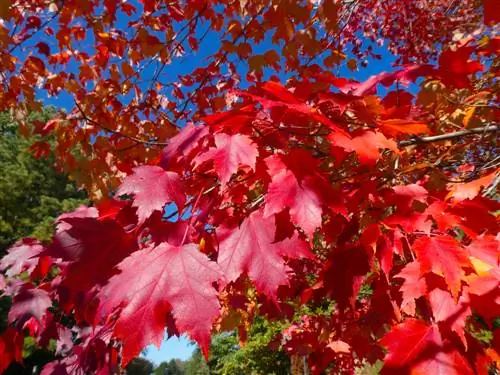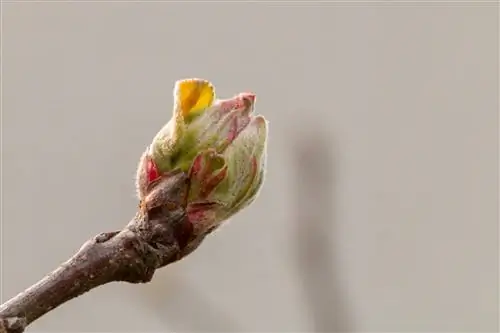- Author admin [email protected].
- Public 2023-12-16 16:46.
- Last modified 2025-01-23 11:21.
After the walnut harvest in early autumn, the flowering cycle of the walnut tree begins again in late winter: In the cool season, the plant forms new buds from which the flowers then emerge in spring. Our detailed guide will explain to you how the small walnut buds ultimately develop into elegant-looking flowers and delicious fruits.
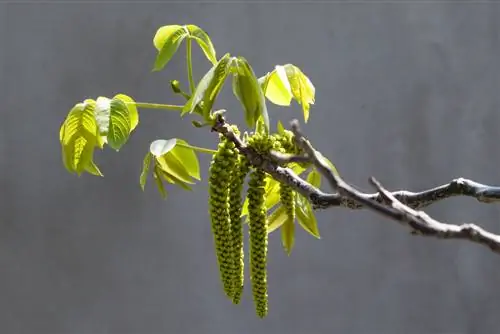
When and how do buds develop on the walnut tree?
Walnut tree buds form in winter, with both male and female buds present. The male flowers appear as catkins while the female flowers grow at the ends of the shoots. The flowering period is between April and June, with fertilization taking place through wind-flowering.
From buds to flowers
The deciduous walnut tree is a hermaphrodite or monoecious (monoecious) plant. This means nothing other than that both male and female buds form on the tree in winter.
Note: At a young age, it can happen that the walnut tree only produces male flowers or only female flowers instead. However, as the years go by and the tree becomes more mature, the distribution usually adjusts so that both sexes are represented.
Male flowers
The male flowers are usually composed of several quite thick, cylindrical inflorescences. These inflorescences are called catkins. They are around six to twelve centimeters long and contain one to four million pollen grains.
Female flowers
The female flowers grow at the end of fresh shoots. They sit either alone, in pairs, in groups of three or in small ears of around 18 to 20 pieces.
Flowering time
The flowering period for the walnut tree is usually between April and June. A special feature occurs: the male flowers usually appear three to four weeks before the female flowers.
Prefemininity (called protogyny in technical jargon) only rarely occurs, in which the female flowers start to bloom before the male flowers are sexually mature.
Self-pollinating wild-flowered plant
The real walnut is a self-pollinating wind-flowered plant - that means nothing other than that the walnut tree is pollinated by the wind.
Note for those interested: Wind-bloodedness is called anemophilia.
The female inflorescences of the walnut are fertilized by pollen, so that they gradually develop into spherical, green-skinned fruits, under whose shell the main attraction of the walnut tree finally grows: the edible kernel, which contains so many he althy ingredients.
Note: Apomixis occurs in a few varieties of the walnut tree, in which the walnuts develop fruit without any fertilization.



